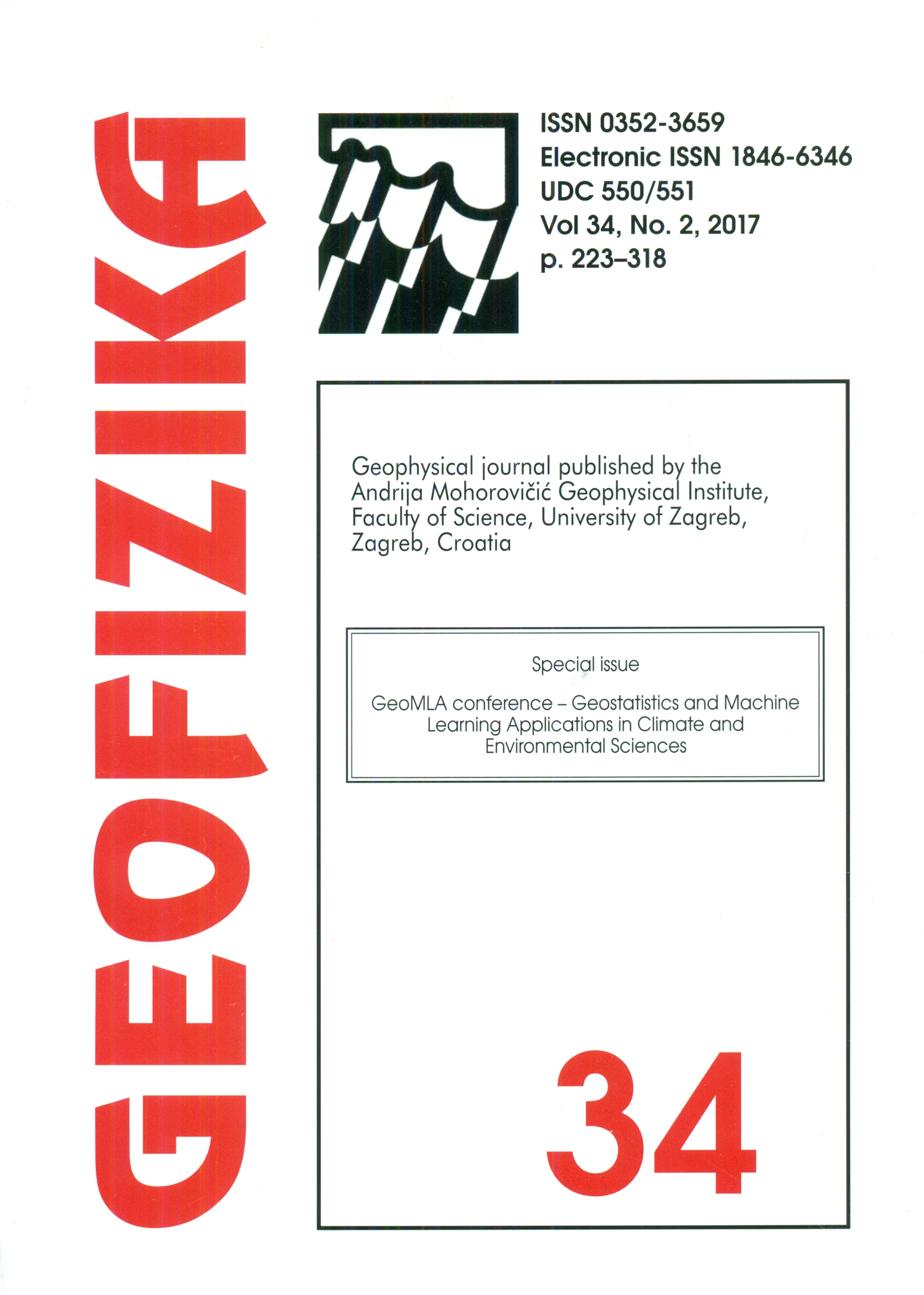Complete and homogeneous monthly air temperature series for the construction of 1981-2010 climatological normals in Croatia
DOI:
https://doi.org/10.15233/gfz.2017.34.13Keywords:
completeness, homogeneity, monthly air temperature, principal component analysis, climatological normalAbstract
Providing climatological normals is one of the most important tasks for national meteorological services. Estimating the statistical characteristics of climate variables from incomplete and inhomogeneous data can result in biased estimations; thus, it is necessary to fill in missing values and remove inhomogeneities. Though it is very important, the homogenization procedure is still not a part of data quality-check procedures. In this work, monthly temperature data from 39 meteorological stations in Croatia for the period 1981-2010 were examined for missing data and inhomogeneities. Stations were divided into three climatic regions, and homogenization was performed for each one separately. The performance of the homogenization method was tested by: (1) comparison of correlation coefficients amongst stations and (2) changes in rotated principal components for datasets before and after homogenization. Obtained homogeneity breaks were compared with metadata and published literature. Changes in the statistical characteristics of temperature climate normals between 1981 and 2010 (e.g., long-term means and decadal trends) were observed at annual and seasonal scales between original and homogenized series. The significance of the changes in mean was tested using the Student's t-test, while the significance of trends was tested with the Mann-Kendall test. The homogenization software used was the R package, climatol.
Downloads
Published
Issue
Section
License
Copyright (c) 2021 Geofizika journal

This work is licensed under a Creative Commons Attribution-NonCommercial 4.0 International License.

